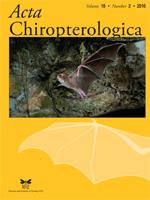The increasing use of non-woven materials, such as breathable roofing membranes (BRMs) within buildings that either currently contain a bat roost or may do in the future, has led to concerns over bat safety by those involved in bat conservation in the UK. Whilst some information is currently available on the selection of roosts in roofs by bats, along with technical specifications of individual membranes, there is no research that has investigated the interactions between the two. Prior to determining the methods needed to test interactions between bats and BRMs, a series of preliminary investigations were conducted; including research and physical measurements on selected anatomical features of bats commonly found roosting in buildings in the UK. Data on body size and shape were gathered from a combination of experimental measurements of bat specimens (deceased) and information collated from literature. Data on bat claw morphology were collected by applying a method used to measure raptor talons, measurements obtained included; width, length and the curvature (hook ratio) of their claws. The results of this research provide additional information about bat body and claw morphometrics. It was found that bat species/group had a significant effect upon the length, width and curvature of the claws (to varying degrees). Pipistrelle species have the shortest and third narrowest claws, whereas serotines have the longest and widest claws on average. The curvature of the claws does not vary greatly between species; however, more variation was seen in the lower portion of the claws. The results from this research also demonstrate that the current standard industry tests do not represent the fine scale at which a bats claws interact with their roosting surfaces. Consequently, this information can be used to aid the development of industry tests for determining the suitability of BRMs for use in bat roosts.
How to translate text using browser tools
1 December 2016
Morphometric Analysis of Body and Claw Dimensions of Building Dwelling UK Bat Species: To Aid Knowledge of Bat Interactions with Roosting Surfaces
Stacey D. Waring,
Emmanuel A. Essah
ACCESS THE FULL ARTICLE

Acta Chiropterologica
Vol. 18 • No. 2
December 2016
Vol. 18 • No. 2
December 2016
bats
claws
curvature
length
Morphometrics
roosting surfaces




